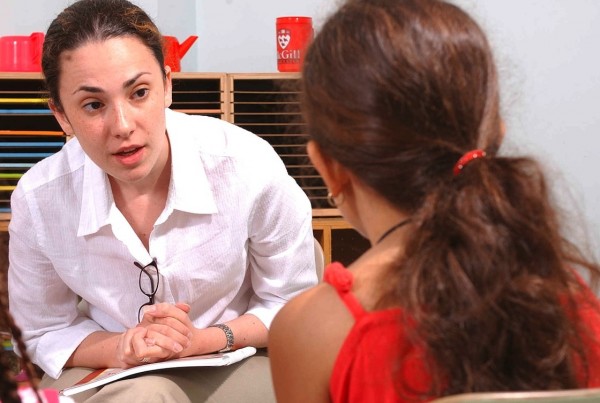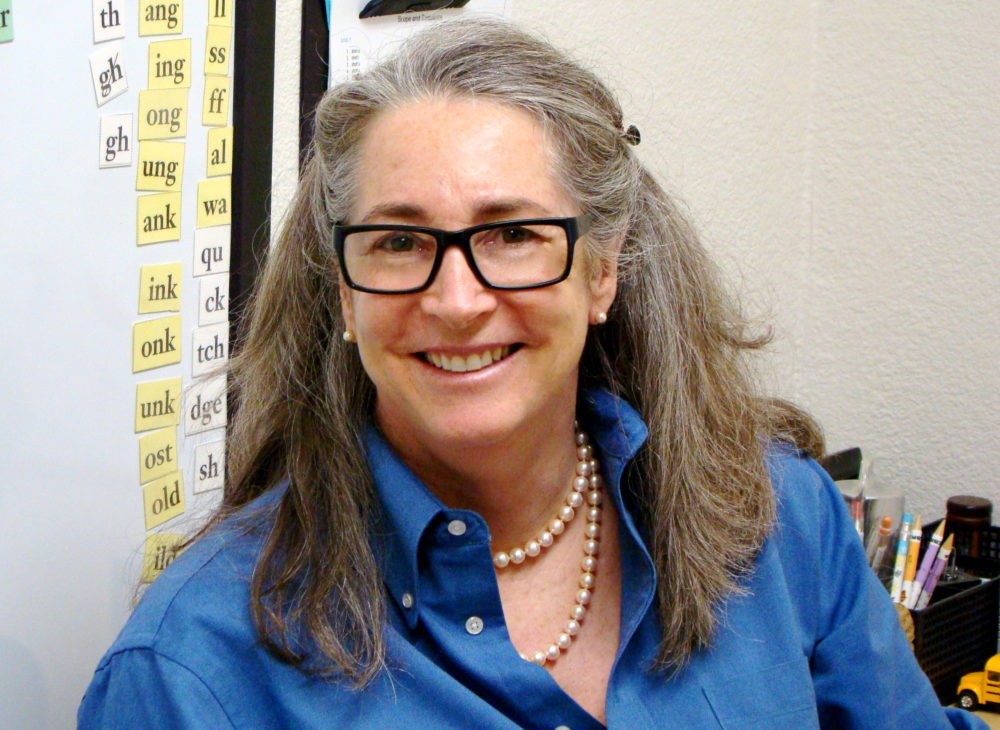
by PRIDE Reading Program Admin | Oct 16, 2016 | A PRIDE Post, ADHD, Dyslexia
The diagnosis of dyslexia is often missed by child psychiatrists, who are frequently asked to validate a diagnosis of attention deficit hyperactivity disorder (ADHD), generated from a psychological evaluation because ADHD is a fairly common disorder with a prevalence of 10% in the US, and because roughly 80% of children with ADHD respond to stimulant medication, the role of a child psychiatrist is often circumscribed to diagnosing and treating ADHD with medication. However, because the dyslexia/ADHD co-morbidity, i.e., “the parallel track diagnosis” of ADHD and dyslexia has been described to be in the range of 10% (Shaywitz, 1988), child psychiatrists often confuse the 20% population of children and adolescents who epidemiologically are not expected to respond to stimulant medications with children with disorders of dyslexia/ADHD comorbidity.
Bruce Pennington (1991) an established authority in the field of dyslexia has suggested that there is no robust two-way association between dyslexia and ADHD, i.e., that increased prevalence of dyslexia in children with ADHD is lacking in several studies, whereas there are increased rates of ADHD in dyslexic samples described. To translate this into a more comprehensive language, I quote my former teacher at UCLA the late Dr. Dennis Cantwell who said:
“When you hear horse hooves around the corner you should suspect the zebra, because if you don’t – you may miss the unicorn.”
Whenever I evaluate a child who has been referred for assessment of probable ADHD, I also include a screening instrument for dyslexia as part of the evaluation. Conversely, if a child who has been properly diagnosed with dyslexia is referred to me for further assessment, I assume that she/he may also have dyslexia/ADHD comorbidity. It is important to remember that although the diagnostic statistical manual (DSM) has trained us all into the habit of diagnosing by categories; many of these disorders are not necessarily categorical, instead present on a dimensional range. That is to say that a child may have mild, moderate or severe dyslexia, as well as the equivalent degrees of ADHD severity. A few additional points deserve to be emphasized on dyslexia and ADHD comorbidity:
1. If a child is diagnosed with dyslexia, there are no medication treatments proven to be efficacious. The treatment of dyslexia is complex. According to authors like Pennington and others it involves a phonic-based approach to reading because the problem of phonological coding is so central to the disorder. Examples of programs, which teach letter sound relations, are the Orton Gillingham, DISTAR, etc. The issue of remediation of spelling dyslexia seems to be fairly complex and several centers do not make spelling a direct target of remediation.
2. Authors like Pennington have advised against the idea of parents tutoring their dyslexic children, not just because they lack specific expertise but because there is a conflict between the two roles that make a parent-child tutoring situation too emotionally charged to be successful.
3. I believe a psychiatrist should treat whatever degree of inattention secondary to ADHD may exist on a child with dyslexia. While minimizing any potential side effects from stimulant medication, i.e. loss of appetite and weight, it is worthwhile optimizing inattention deficits through the prescription of medication on a child with dyslexia.
4. There are diagnostic boundaries that need to be monitored on a longitudinal basis. In other words, if the expectation of parents or teachers is that with remediation of inattention through medication management, deficiencies secondary to dyslexia will also fall into place, these assumptions have to be identified and corrected. This is often a set up for delaying the necessary treatment of a child with dyslexia. This delay is often painful to witness because the large majority of children with untreated dyslexia eventually become demoralized, some of them clinically depressed. I have seen in 15 years of practice, children with dyslexia who barely compensate for their deficiencies in an educational environment that is still very alphabetic so to speak, for example in the teaching of languages, (heavily relying on grammar). As time goes by, children with untreated dyslexia become school avoidant, and often resort to maladaptive patterns in order to compensate for loss of self-esteem.
For more information regarding dyslexia/ADHD morbidity or to have your child evaluated for a screening please feel free to contact Dr. Pablo De Amesti Davanzo below.
Learn more about the New PRIDE Reading Program
________________________________________________________________________________________________
Dr. Pablo De Amesti Davanzo, MD is Senate Emeritus of Psychiatry, University of California, Los Angeles and former National Institute of Mental Health (NIMH) Career Development Awardee. He completed his residency training in Psychiatry at Duke University in 1993 and his fellowship training in Child and Adolescent Psychiatry at UCLA in 1995. He is currently the psychiatrist of the Child and Family Guidance Center Northpoint Intensive-Outpatient Day Treatment Center in Northridge, CA. Dr. Pablo Davanzo can be reached by voicemail at his Brentwood office (310) 571-1519.

by PRIDE Reading Program Admin | Sep 30, 2016 | Dyslexia
October is National Dyslexia Awareness Month and a Mission Viejo Dyslexia Center is helping out the community by offering a reduced-rate reading assessments throughout the month of October.
“One out of every five children has some form of Dyslexia,” says Karina Richland, a Dyslexia specialist and owner of the Mission Viejo Dyslexia Center and numerous Dyslexia programs throughout Los Angeles and Orange County. Richland reports that “most children with Dyslexia in the classrooms go undiagnosed for years. If these kids are detected early on and given the proper intervention they can actually improve their reading and writing skills dramatically.”
The Mission Viejo Dyslexia Center at PRIDE Learning Center teaches children with Dyslexia how to read and write using a multisensory program called the Orton-Gillingham approach. It is an intensive one-on-one reading program that stresses teaching the entire structure of written English through a structured, systematic and cumulative teaching of letters and their corresponding sounds.
“The sooner a child with Dyslexia gets the proper intervention, especially in the very early grades, the more likely it is that they will have fewer or milder difficulties in the later grades,” states Richland.
Throughout the month of October, parents can bring their children into the Mission Viejo Dyslexia Center for a reduced-rate assessment that will measure their reading and spelling abilities. To schedule an assessment contact the Mission Viejo PRIDE Learning Center at 949-484-0230 or visit the website at www.pridelearningcenter.com

by PRIDE Reading Program Admin | Aug 30, 2016 | A PRIDE Post, Dyslexia
A parent is asking “Why don’t they test dyslexia in all children?”
My answer is that morally speaking, they should, but legally speaking, all schools are supposed to test children for learning disabilities such as dyslexia when there is a reason to do so. The reason to test dyslexia in a child can be as innocuous as a suspicion on the part of a professional teacher or staff member that something (perhaps) unknown prevents a particular student from learning.
Schools are supposed to act as required by law. There is no absolute requirement to test dyslexia in all children, so schools do not currently assess all students for dyslexia unless there is a particular reason to do so. When a parent, teacher or staff member believes that an assessment may be needed in an area of suspected disability, that belief provides a particular reason to ‘test’ or ‘assess’ whether a learning disability such as dyslexia is present. There are many reasons to believe that a particular child should be assessed for a learning disability.
Imagine being a teacher. You are staring into the faces of 20 eager students seated at their desks and looking at you expectantly. Each one is different. Each one looks different. Each one has a different name. Each one has a different background. Not one of them approach learning in the same way. Some of them have disabilities that impact learning, and all of them have the ability to learn if provided special education services and accommodations.
In my experience in a typical K-12 class, there will be an average of at least five kids in twenty who do not seem to focus on the lessons written on the board or textbooks, who write letters backwards, who seem unable to keep handwritten text organized and spaced properly on a page, who squirm, daydream, speak out of turn, fail to follow directions, become defiant, hate school, and/or distract the class from the lesson plan. Any of these characteristics can be indications that something is preventing each of these students from learning. Students demonstrating any of these behaviors could be candidates for testing dyslexia and assessment if there is a suspicion that a disability may be causing the behaviors interfering with learning.
A disability does not have to actually exist to trigger the law’s duty to ‘Child Find.’ It is enough if there is an area of suspected disability.
Although it is the school’s responsibility to implement ‘Child Find’ policies to identify and then remediate learning disabilities, savvy parents with advocacy experience will always want to assure in advance that everybody does the right thing, and follow-up afterwards. Here’s how we do it: put in writing all reasons for the concerns that a disability may exist. Explain that whatever the cause may be, it is impeding your child’s learning. Cite examples, and ask for a psycho-educational evaluation at the school’s expense to determine whether a learning disability is interfering with your child’s access to the educational curriculum. This will trigger a timeline, and the school will have a certain amount of time to respond. Deadlines do tend to motivate action, but a parent who is pro-active will not wait for the school to schedule an assessment; for many reasons it is advisable to take a child to a private psychologist who specializes in psycho-educational evaluations.
Some parents feel that psychologists employed by a school district have a first loyalty to the school district/employer and not to the child being tested. These parents feel there is a built-in bias or conflict of interest when the testing staff are employees of an entity which may have adverse interests to their child. There are nonprofit organizations and some private psychologists providing sliding fee scales depending on a family’s ability to pay for the private evaluation(s), which can become costly. Finally, the testing psychologist writes a report, or assessment, about a student – these should be written only after careful study, testing, observation, interviews with teachers, staff, parents, friends (if applicable) and review of student’s work product. No single method of evaluation is sufficient to determine whether a learning disability exists.
A parent can call for an individual education plan (IEP) meeting at any time by writing and delivering a letter to the appropriate school staff. Schools may fail in their ‘child find’ efforts, but no parent should! Any parent who believes something is interfering with her child’s ability to read, write, spell, and do math ought to have her child evaluated to see whether a learning disability exists, and find out what can be provided in the way of educational services and accommodations to allow this child to receive an appropriate education.
So, if you think your child has dyslexia, be a squeaky wheel and get a dyslexia test for your child. Nobody will do your child’s educational advocacy for you. For more information, ask someone with experience to teach you to advocate for your child’s educational needs. Be sure to bring every educational document in your possession, including IEP documents, testing from the past, teacher letters, etc.
It is with adult vigilance, follow-through and careful observation that all students who need it will be ‘found’ through ‘Child Find.’ That is, they are identified, assessed, and provided with the educational services and accommodations needed to learn effectively.
Learn more about the New PRIDE Reading Program
_________________________________________________________________________________________________
Nan Waldman, Esq. is a special education and disabilities consultant in Los Angeles with 20 years of experience in the field. She is also a parent and primary caregiver of a child with disabilities, a teacher, an advocate and a lawyer. Nan Waldman, Esq. can be reached by email at n.waldman.esq@gmail.com

by PRIDE Reading Program Admin | Apr 15, 2016 | Dyslexia, Summer Programs
PRIDE Learning Center, a dyslexia tutoring and reading help program in Orange County, has announced it will open a summer reading camp in San Diego.
The specialized tutoring and reading help this summer in San Diego will meet the needs of children with dyslexia and reading disabilities. This intensive yet fun summer reading camp is available to the public, and is designed to help children ages 4-18 develop a strong reading foundation for academic and emotional success.
PRIDE Learning Center is a leading tutoring company in Orange County for students with dyslexia and reading disabilities. Their reading and comprehension program has been shown to boost student performance almost 2 grade levels in just 3 months. The Orton-Gillingham instruction develops the underlying reading and comprehension skills necessary for students with dyslexia and reading disabilities. It is common to see years of reading improvement after just weeks of intensive instruction.
The dyslexia tutoring and reading help camp at PRIDE Learning Center will run weekly from June – August and children can attend from either 9:00am – 12:00pm or 12:30pm – 3:30 pm Monday –Friday. All lessons at PRIDE Learning Center are one-on-one Orton-Gillingham language and reading lessons.
“The summer months are such a wonderful and effective time for struggling students to boost their skills and close the reading and comprehension gaps,” says Karina Richland, owner of PRIDE Learning Center. “Although our reading camp is intensive and highly structured, the staff at PRIDE make it really fun and super engaging for the kids. The kids love it and we have families return to us each summer, many of them from abroad where services are very limited.”
The dyslexia tutoring and reading help summer camp will run weekly from June20th – August 5th. It will be located at the Chabad Center of University City at 3813 Governor Drive in San Diego, Ca 92122.
Individuals interested in the summer reading camp at PRIDE Learning Center can call (866) 774-3342 or email info@pridelearningcenter.com. A summer registration form is on the website at: www.pridelearningcenter.com

by PRIDE Reading Program Admin | Mar 15, 2016 | ADHD, Dyslexia, Reading Skills, Summer Programs
Come to our Open House to learn about our specialized summer camp in three Orange County locations.
Our summer reading camp at PRIDE Learning Center will run weekly from June – August to accommodate busy schedules and traveling families. Children can attend from either 9:00am – 12:00pm or 12:30pm – 3:30pm Monday – Friday. All teachers are credentialed and deliver one-on-one Orton-Gillingham language and reading lessons. We will have locations in Newport Beach, Yorba Linda and Mission Viejo.
We will be in Orange County on Saturday, April 16th from 10:00am – 1:00pm at the PRIDE Mission Viejo Center. The address is 27001 La Paz Road #354 in Mission Viejo, CA 92692. Join us to learn more about our program, meet our staff and register for our summer camp. We will also be offering reduced rate assessments if you would like to bring your child in for this special event.
Individuals interested in the Open House in Orange County can call (949) 484-0230 to RSVP and schedule an assessment or email info@pridelearningcenter.com.

by PRIDE Reading Program Admin | Mar 6, 2016 | A PRIDE Post, Dyslexia
It may be very frustrating to learn about the importance of early intervention when that window of opportunity has already passed for your middle or high school child with dyslexia. However, acting on behalf of your child will require moving beyond this frustration point and really focusing on what needs to be done in the present. Rest assured that most middle and high school students with dyslexia can be helped and can catch up to grade level. This will take more time, more effort, and more intensity of instruction, but it is never too late to do something about reading and writing difficulties.
Poor readers in middle and high school can be brought up to grade level and kept at grade level with one to two years of instruction using a specialized program intended for students with dyslexia such as the Orton- Gillingham. This approach is multisensory and students use the visual, auditory and kinesthetic channels simultaneously when learning new skills and reading concepts. It is structured, sequential and cumulative.
Students with dyslexia in middle and high school have the same basic problems as younger poor readers and need to learn the same skills. These problems, however, are complicated by years of feeling failure and frustration. Many middle and high school dyslexics no longer believe that they can be helped.
The course of action in helping a child with dyslexia through school may seem like an eternal endeavor to most families, but eventually all the hard work pays off. The dyslexia that caused the child to have difficulties learning to read in the beginning, will also cause troubles later on with spelling, writing, learning a foreign language, and frequently in learning algebra.
Skipping the basic skills of reading is a huge mistake. An older student with dyslexia who lacks basic awareness of speech sounds cannot learn to read unless this problem is addressed. This student will need to begin with phonological awareness, followed by sound-letter correspondences. Unfortunately, there is no shortcut to learning how to decode words fluently and accurately, and no way to bypass this stage altogether of learning to read. Although it is tough in the beginning, nothing is more motivating than success, once students experience appropriate Orton-Gillingham instruction.
A middle and high school student with dyslexia will need an Orton-Gillingham program that is intense enough to close the reading gap. Up to two hours daily may be needed to bring a student to grade level. In general, the larger the gap between the student’s skills and the grade level, the more intense the intervention must be to catch up.
Learn more about the New PRIDE Reading Program
______________________________________________________________________________
Karina Richland is the Founder of Pride Learning Centers, located in Los Angeles and Orange County. Ms. Richland is a Certified reading and learning disability specialist. Ms. Richland speaks frequently to parents, teachers, and professionals on learning differences, and writes for several journals and publications. You can reach her by email at karina@pridelearningcenter.com or visit the Pride Learning Center website at: www.pridelearningcenter.com






